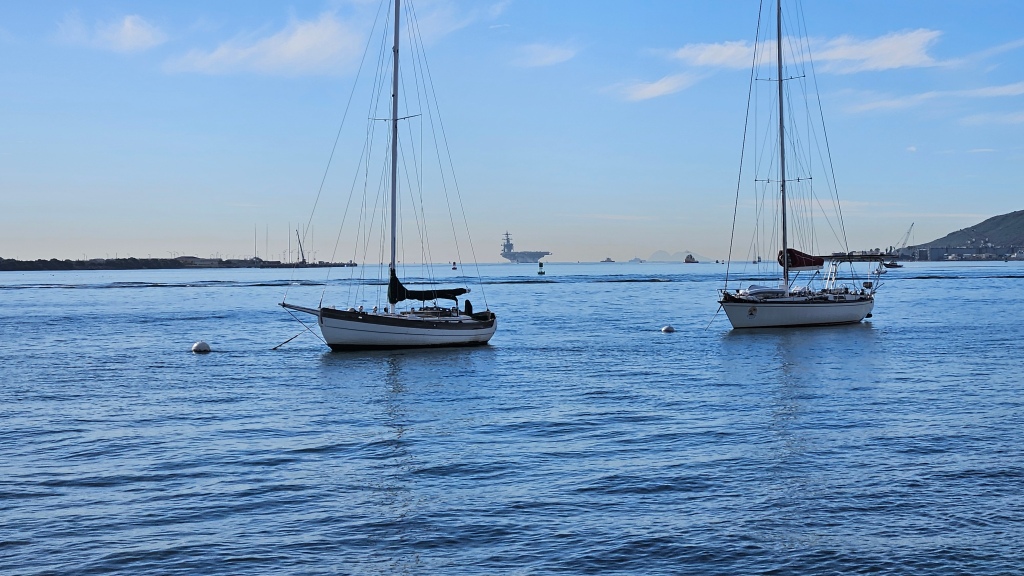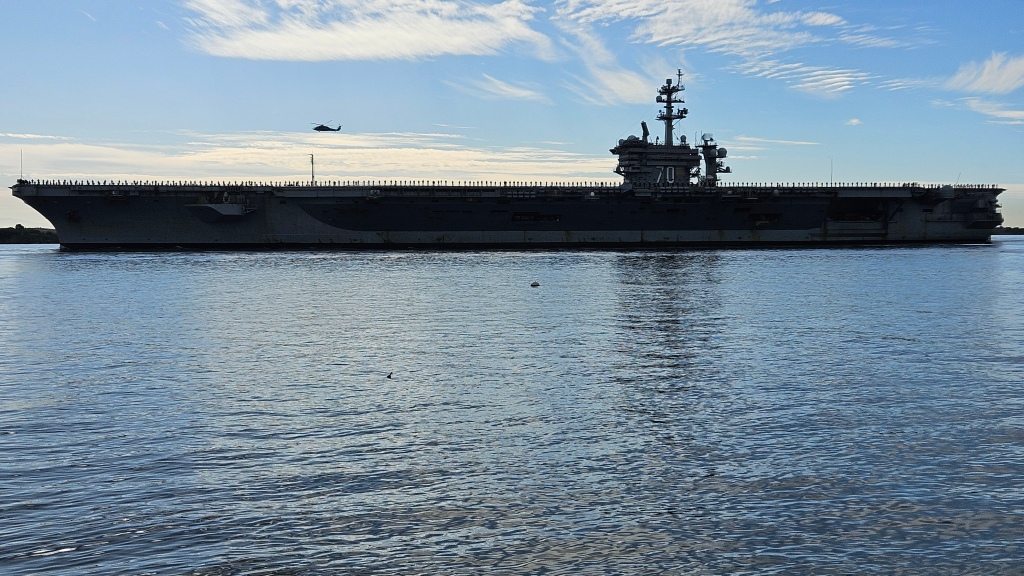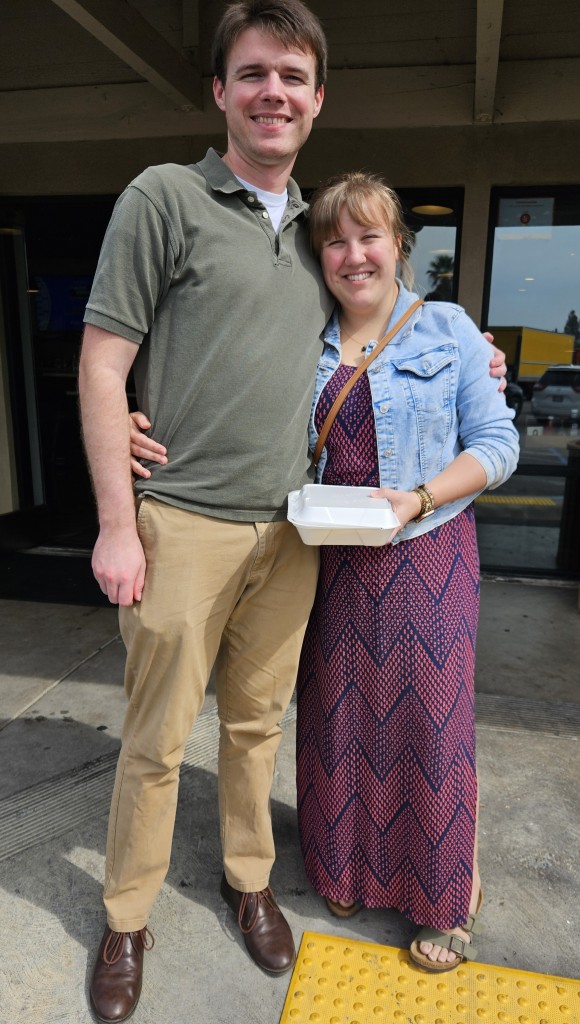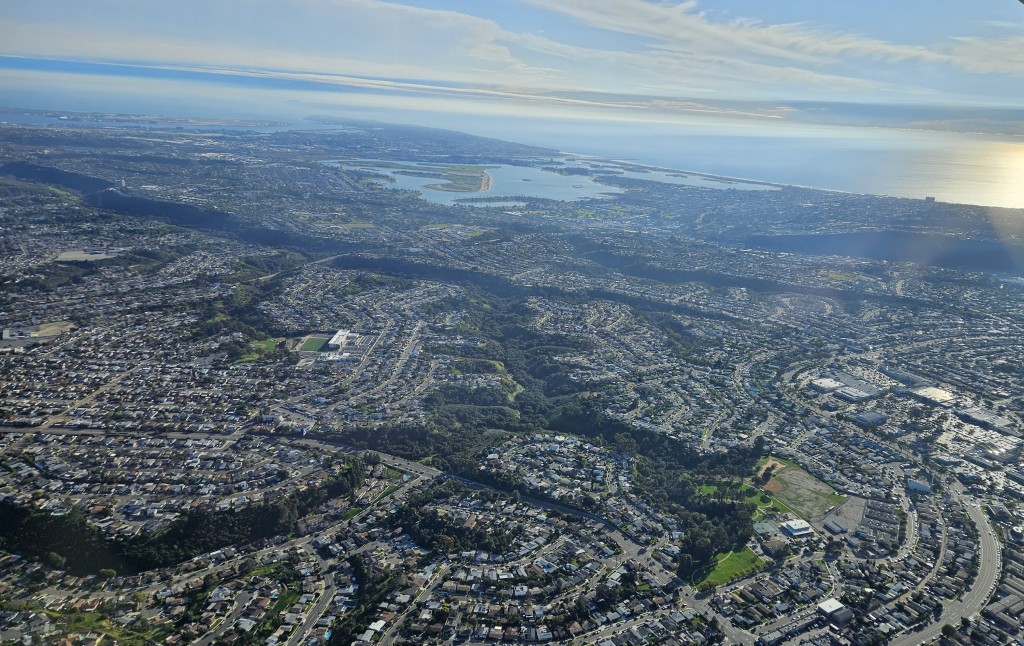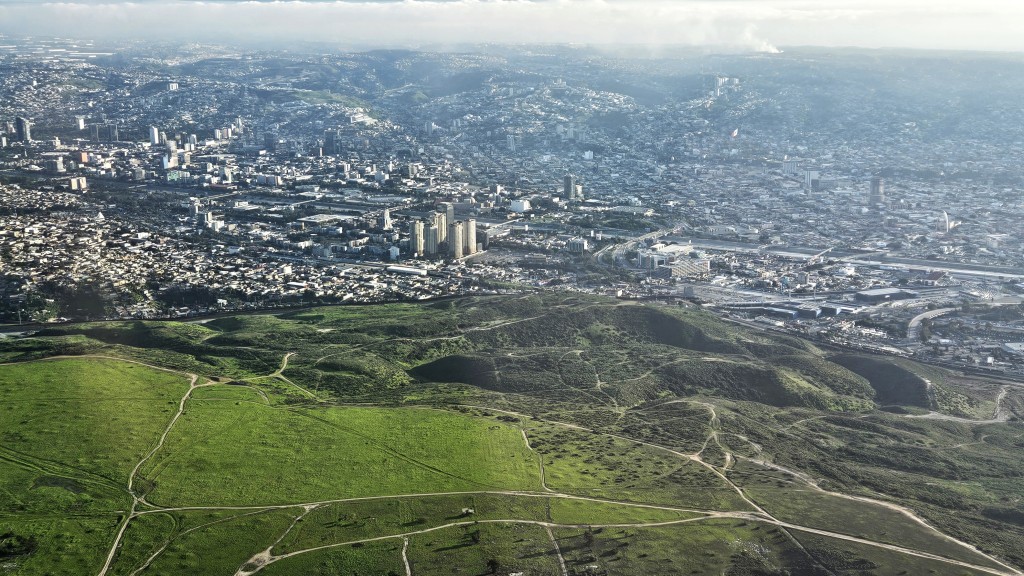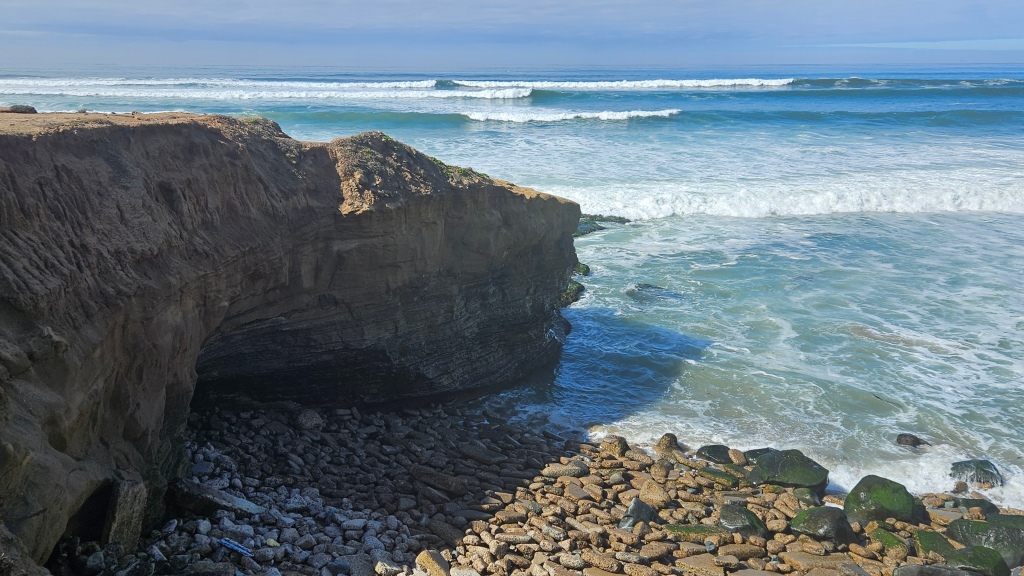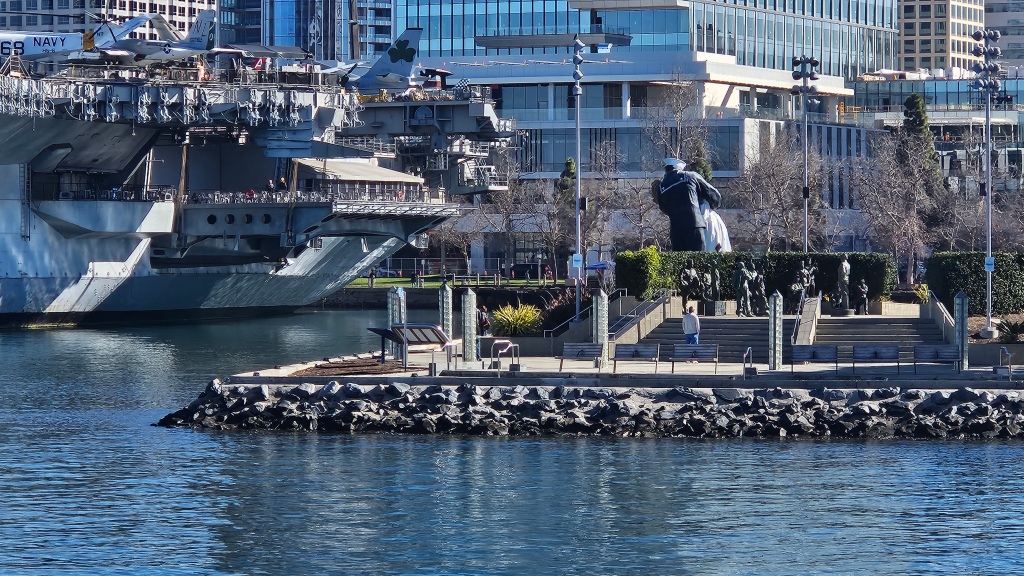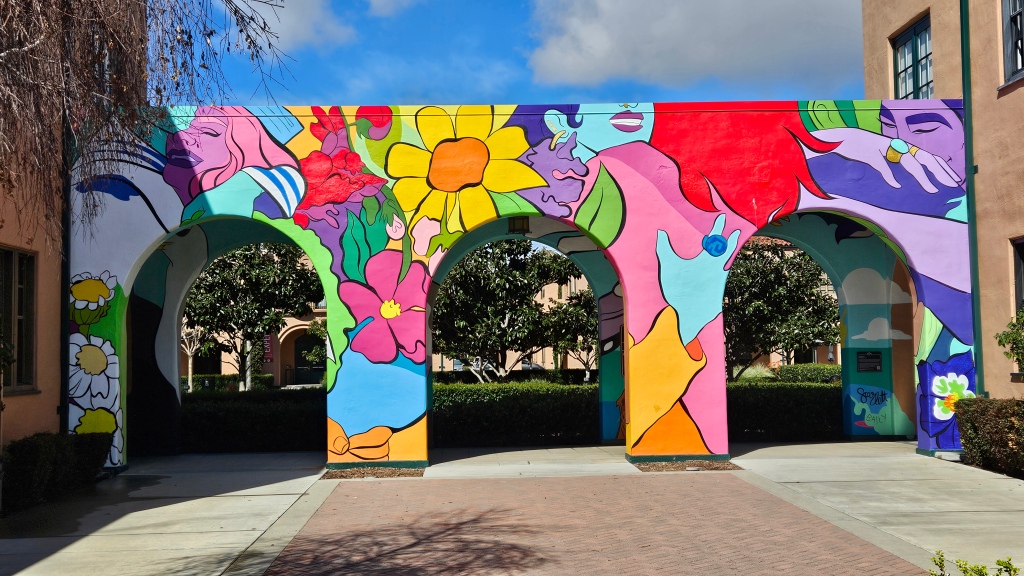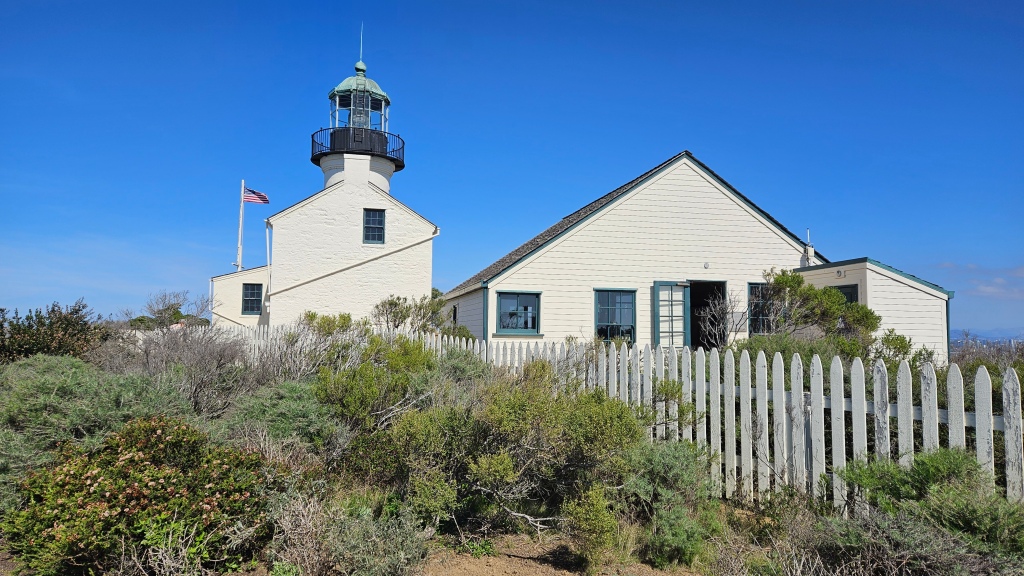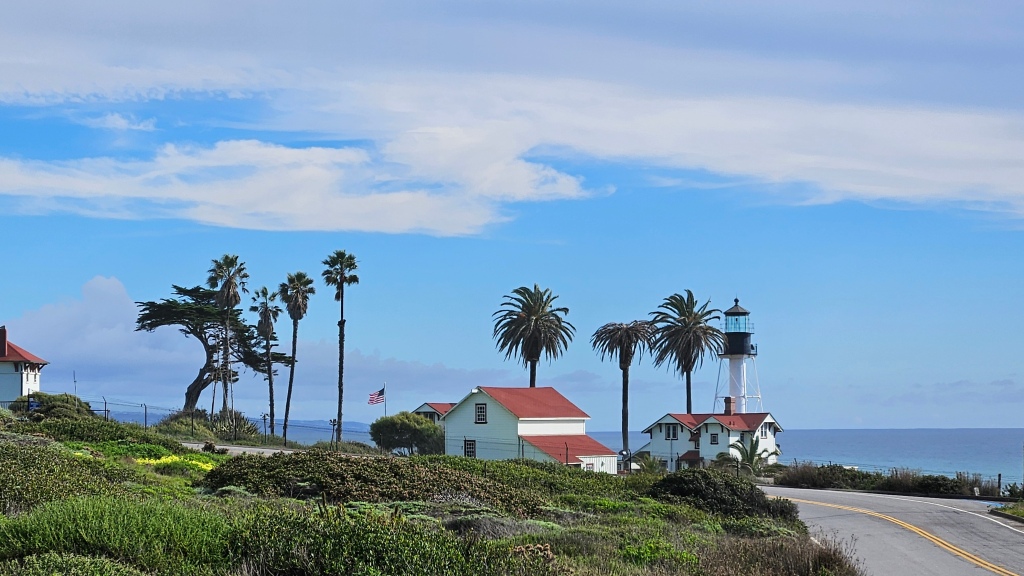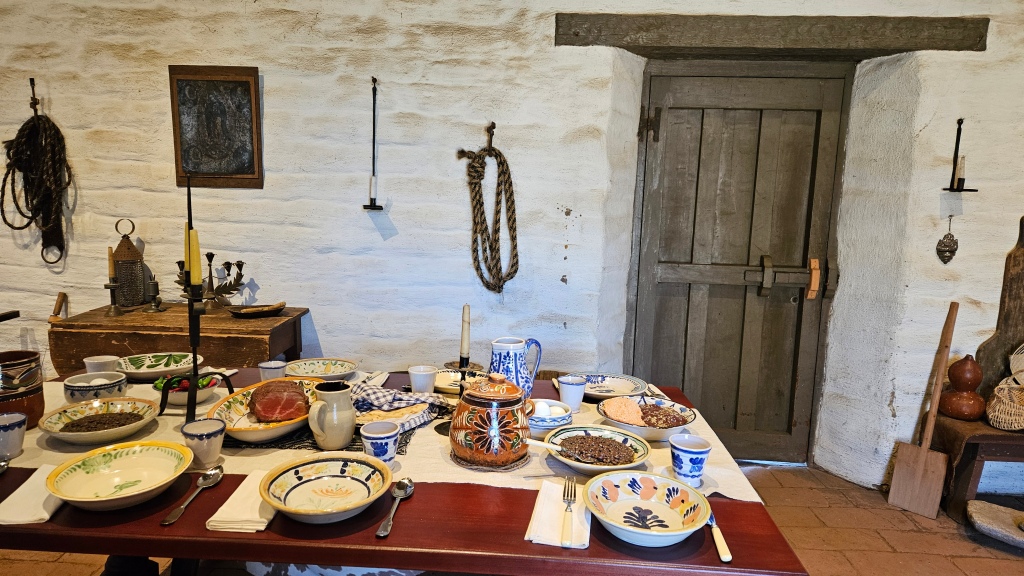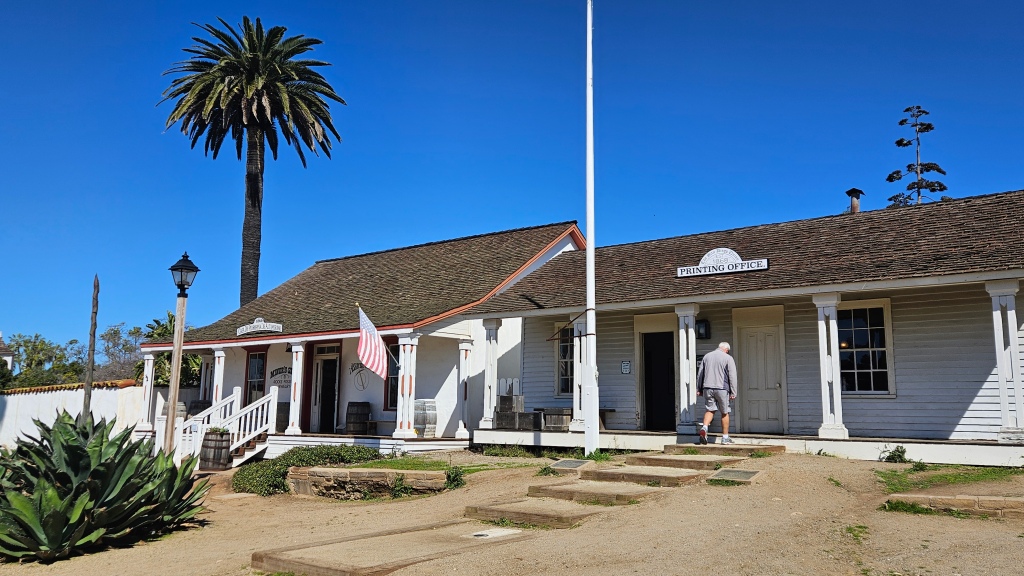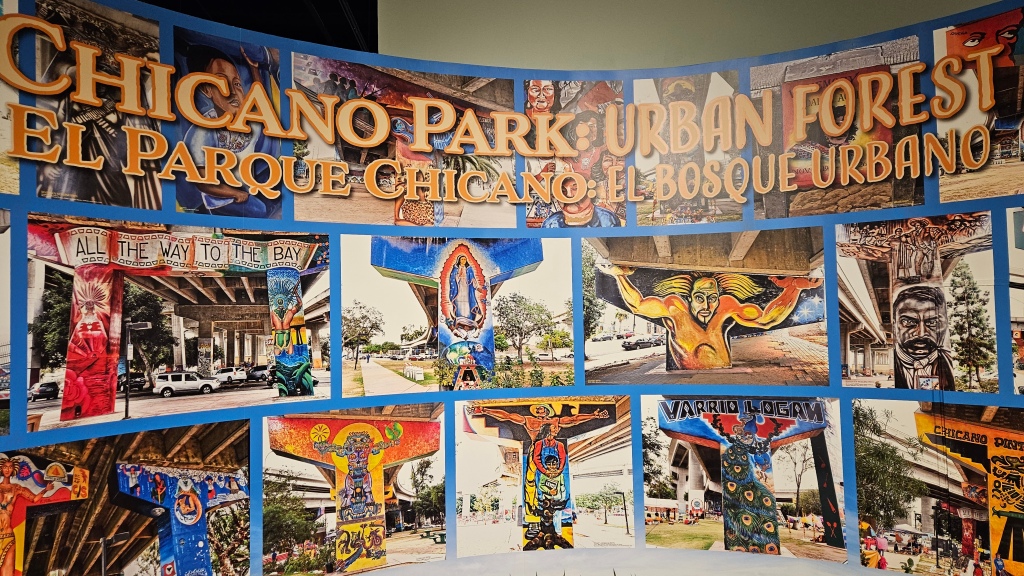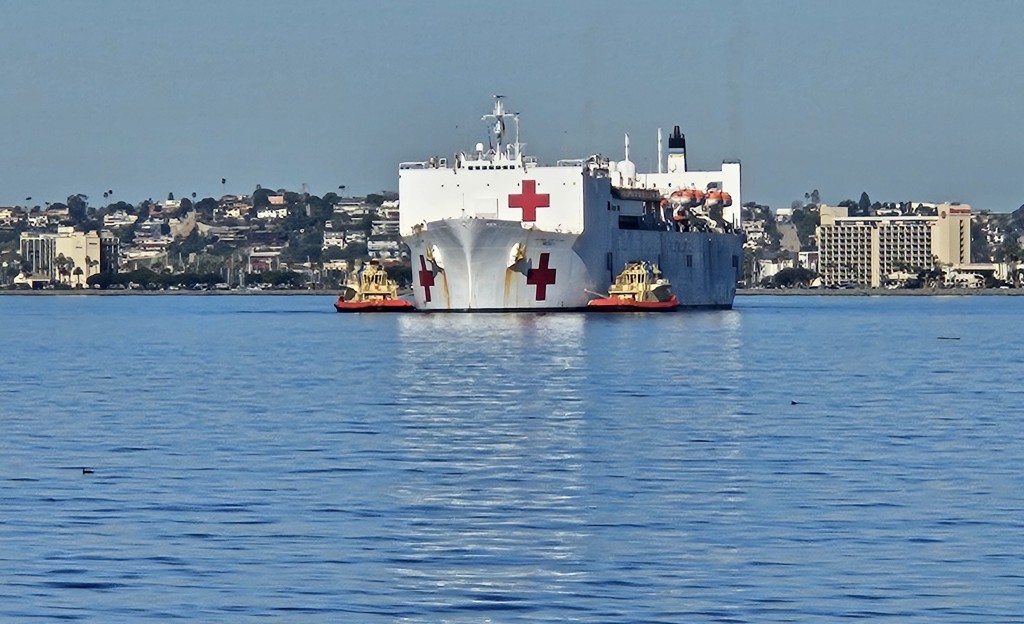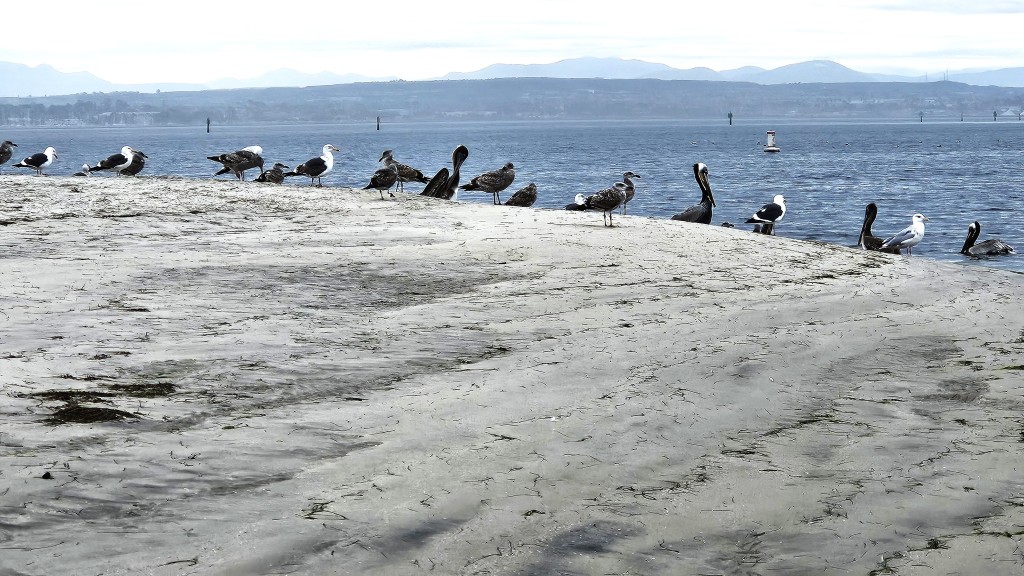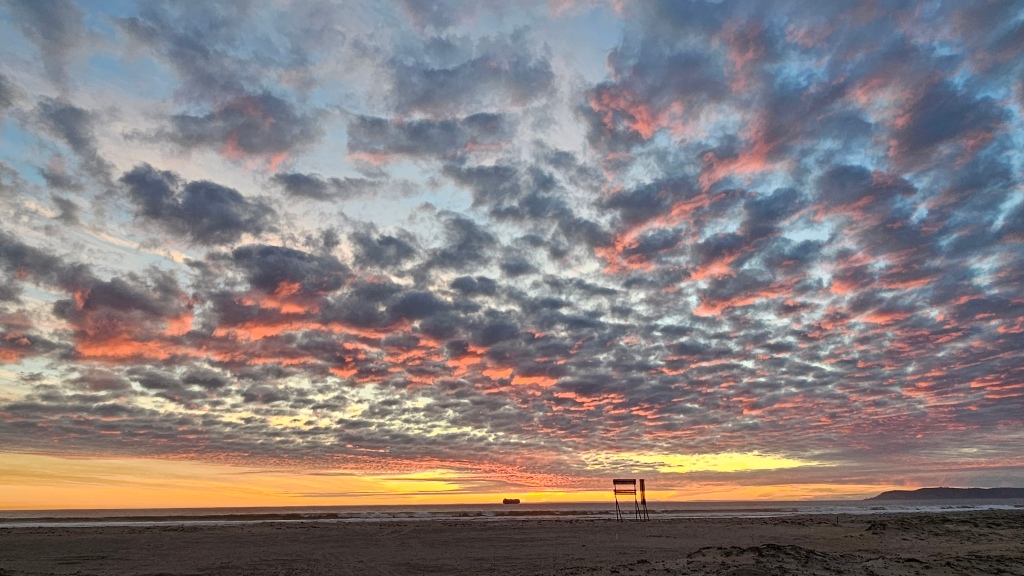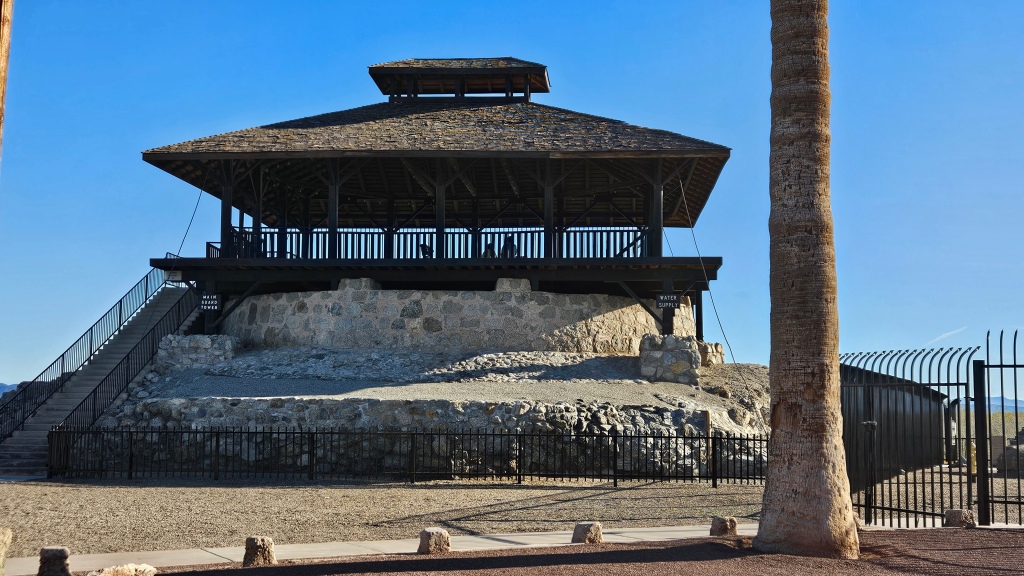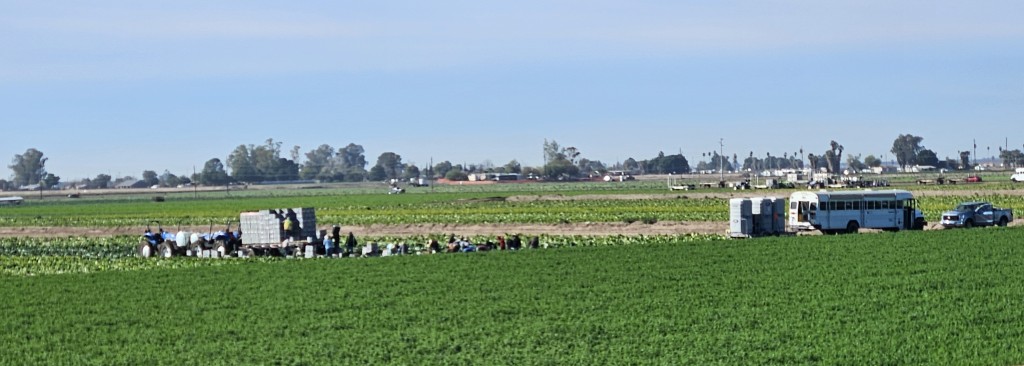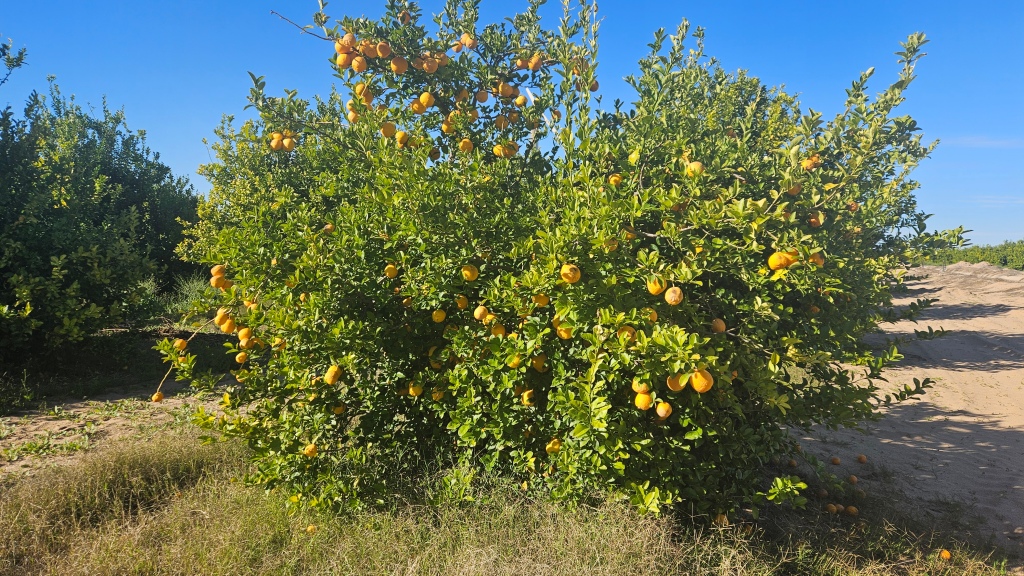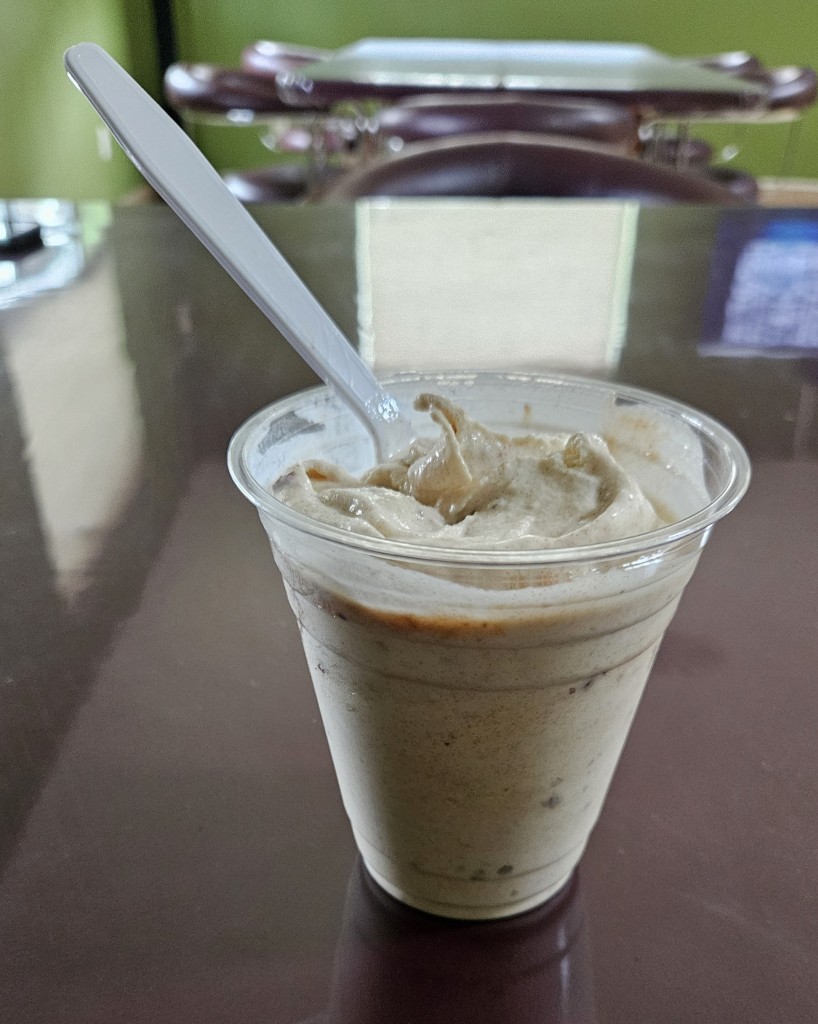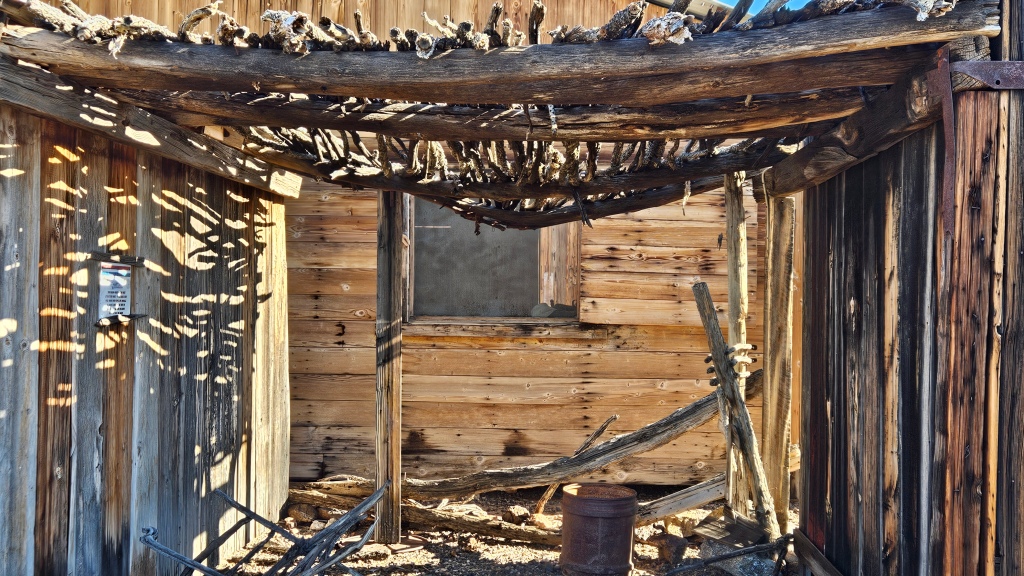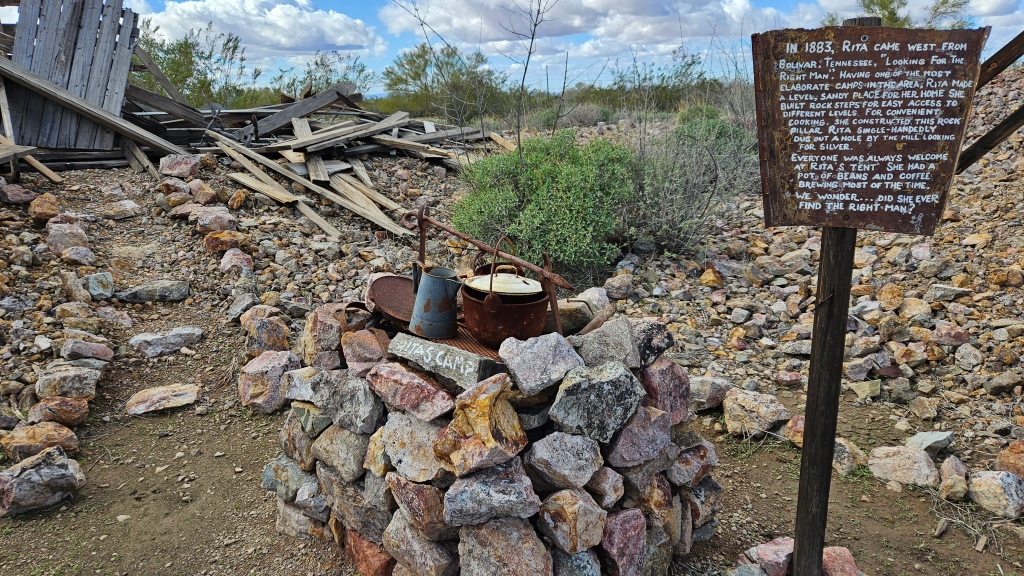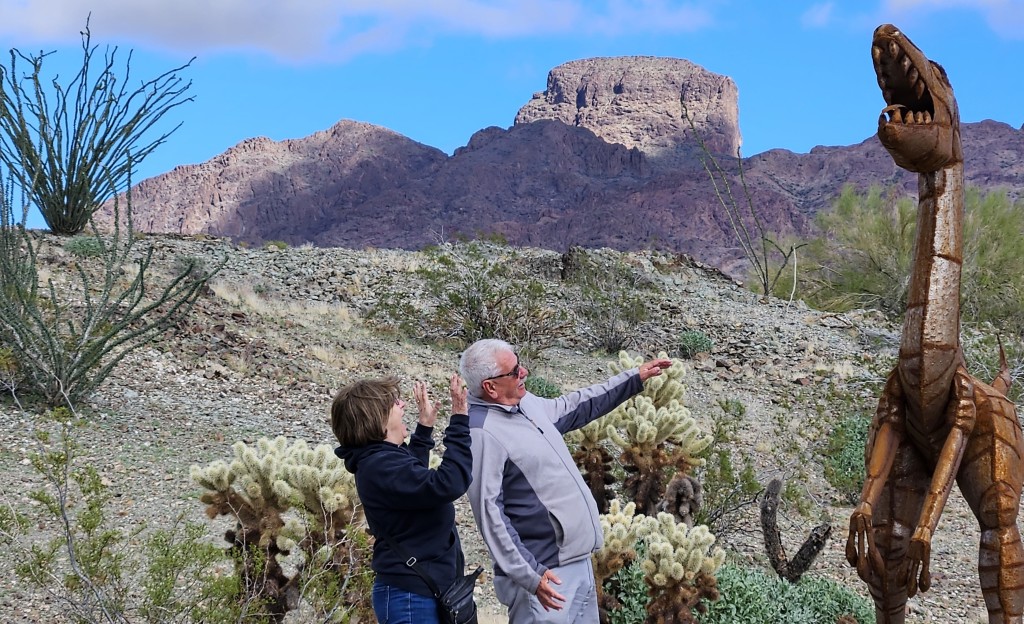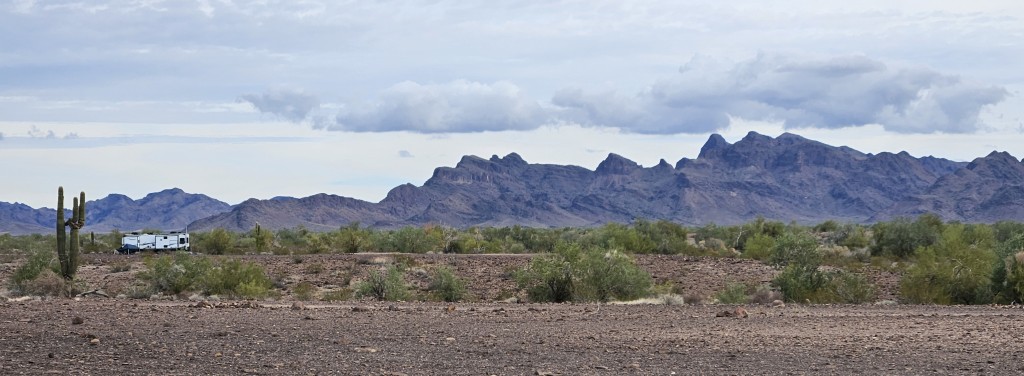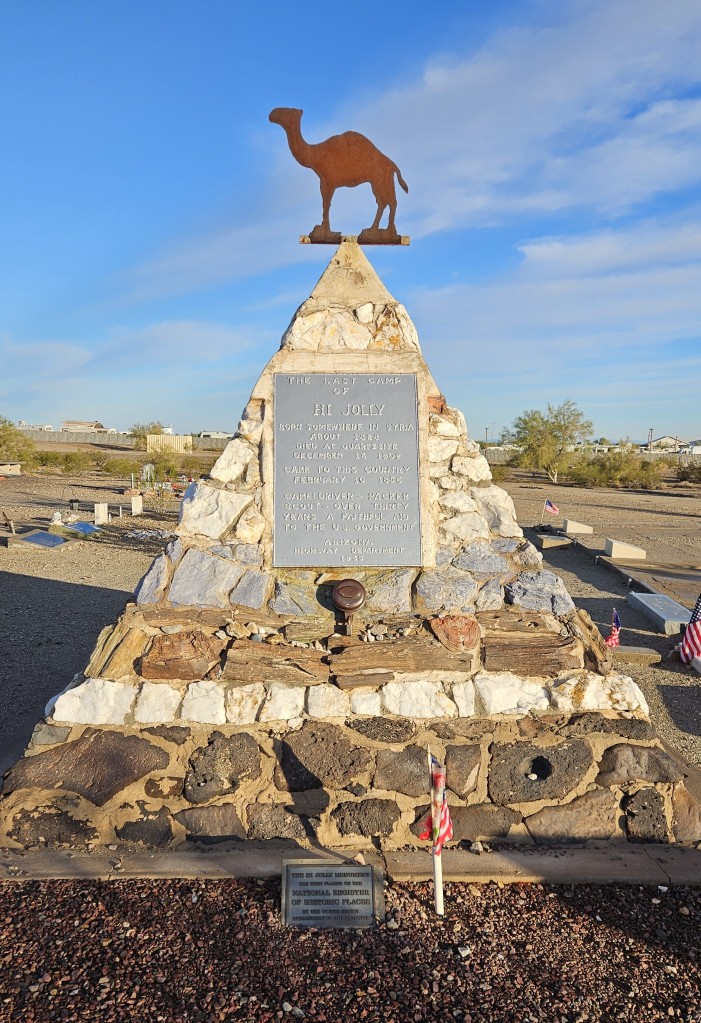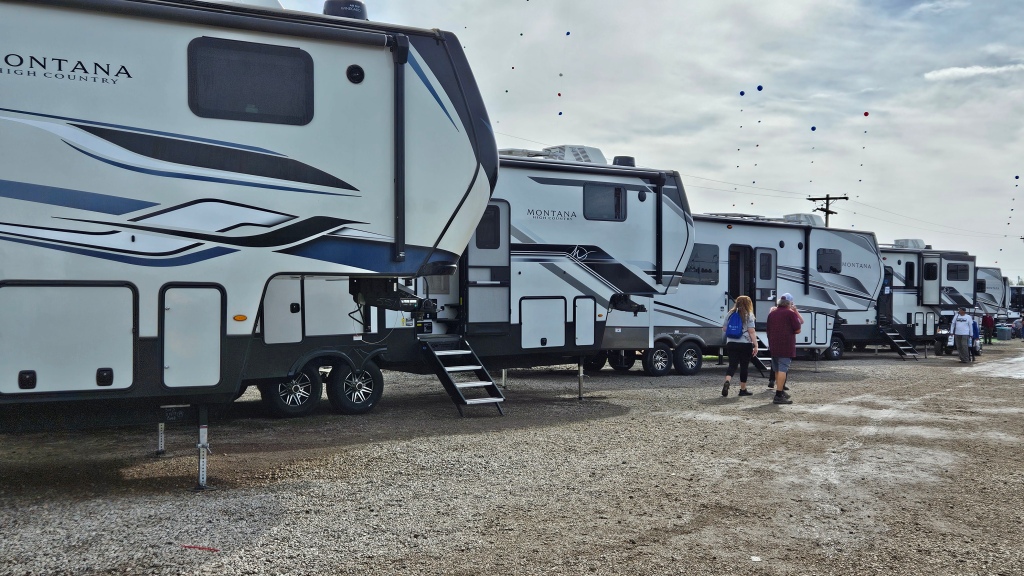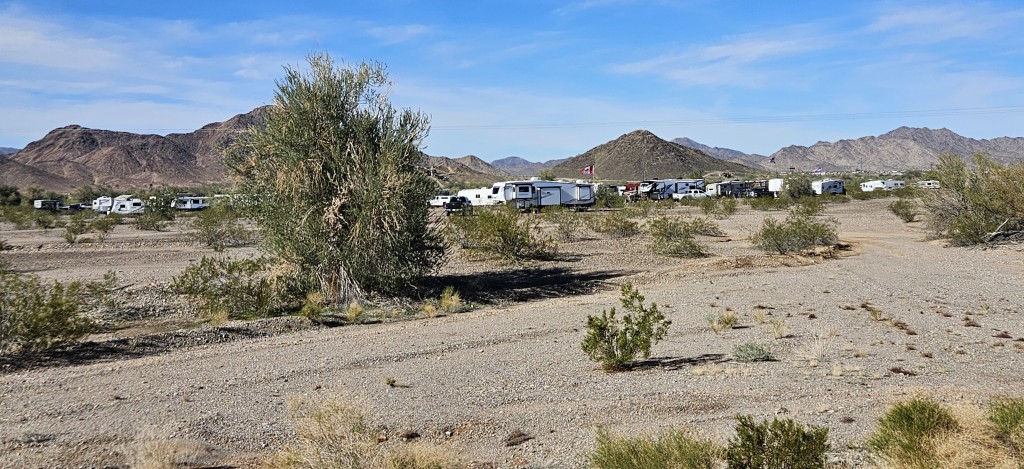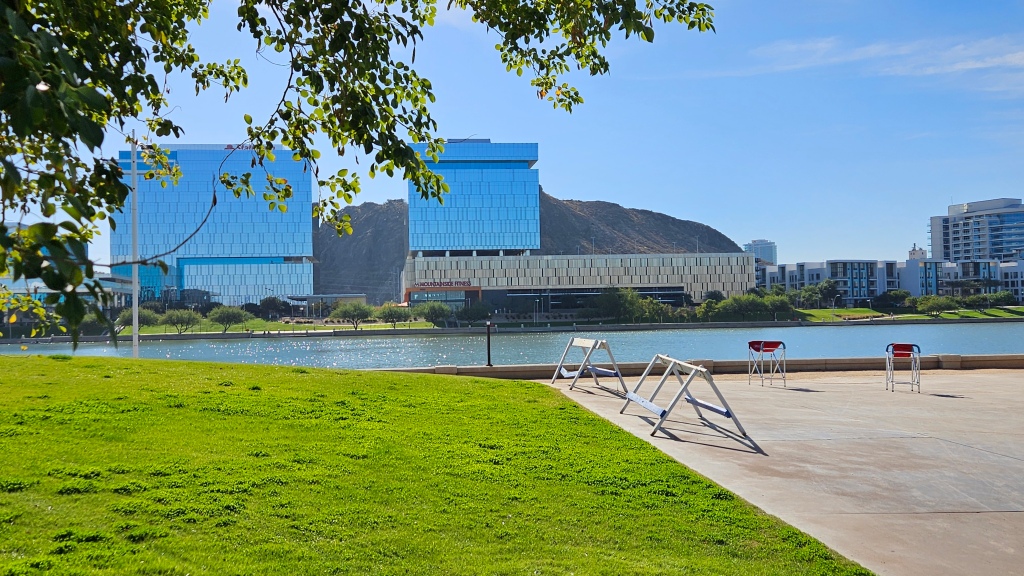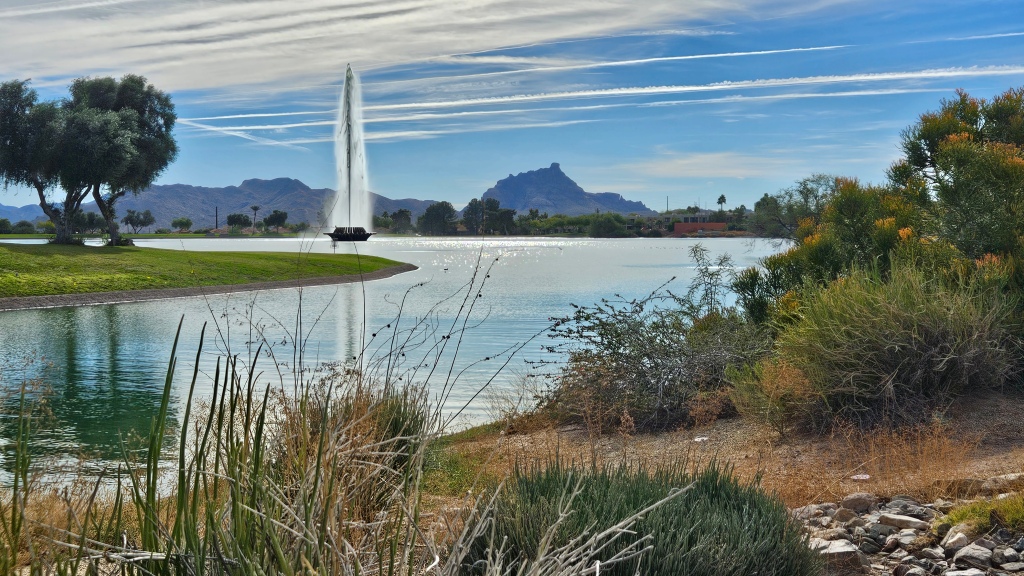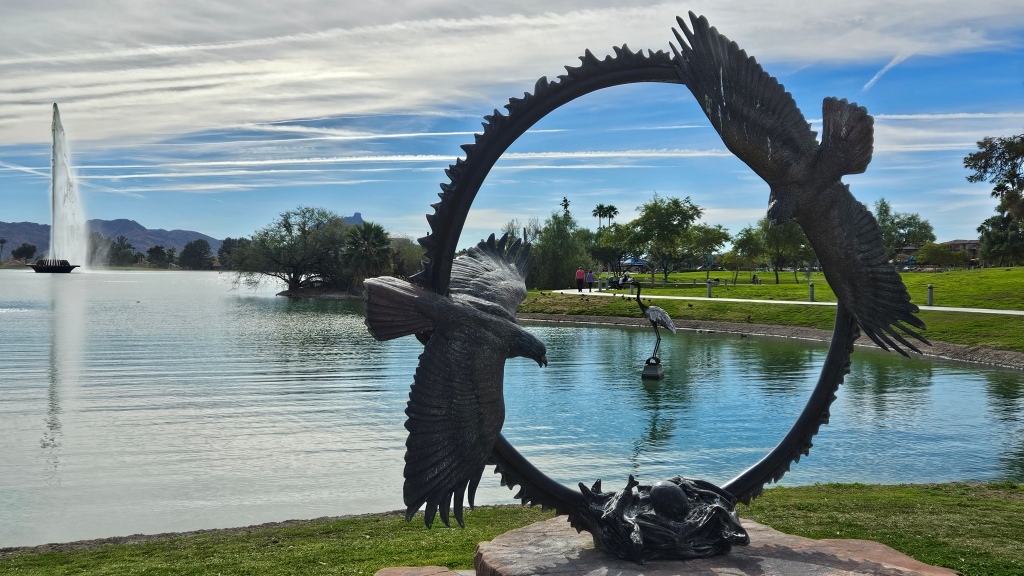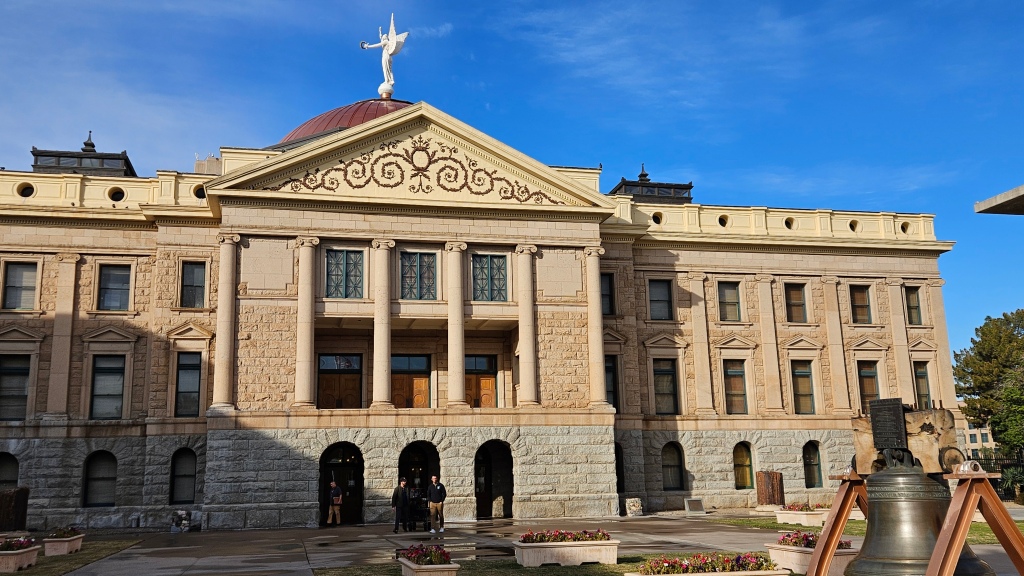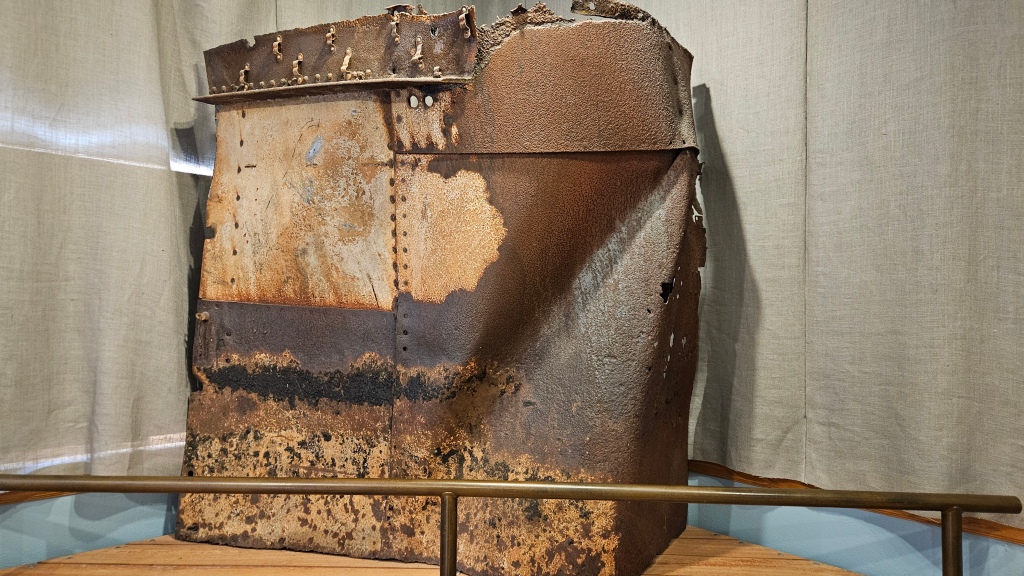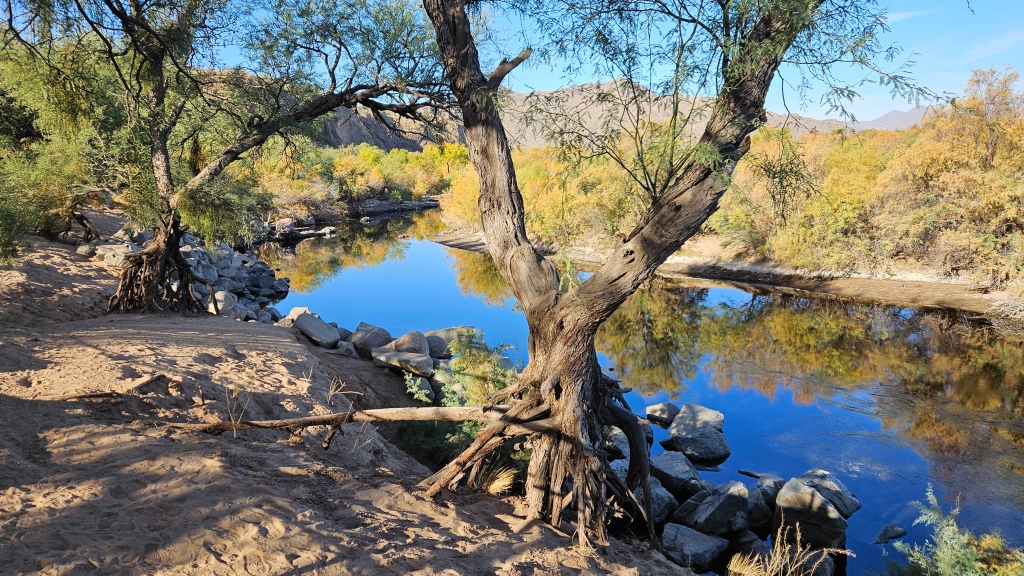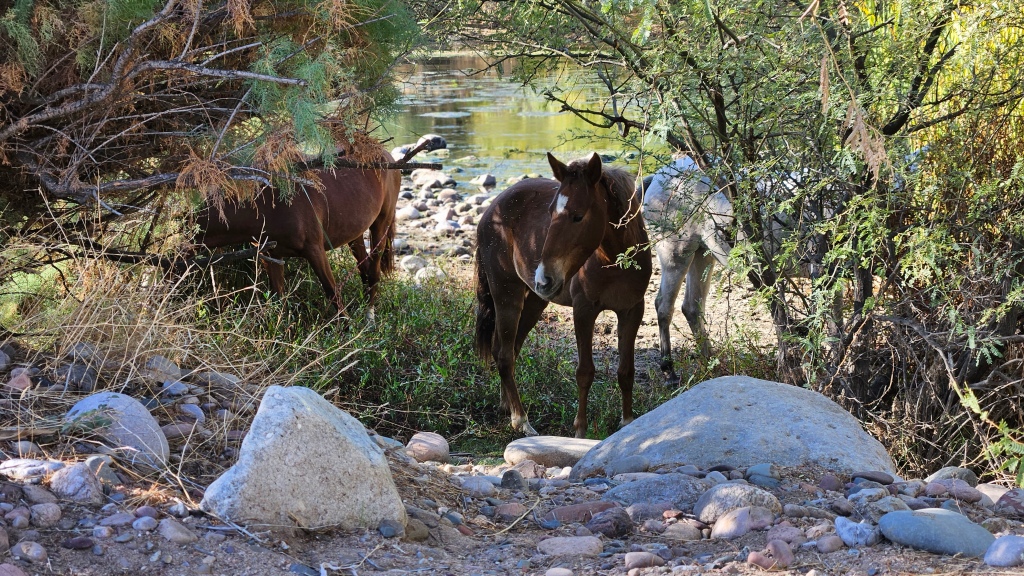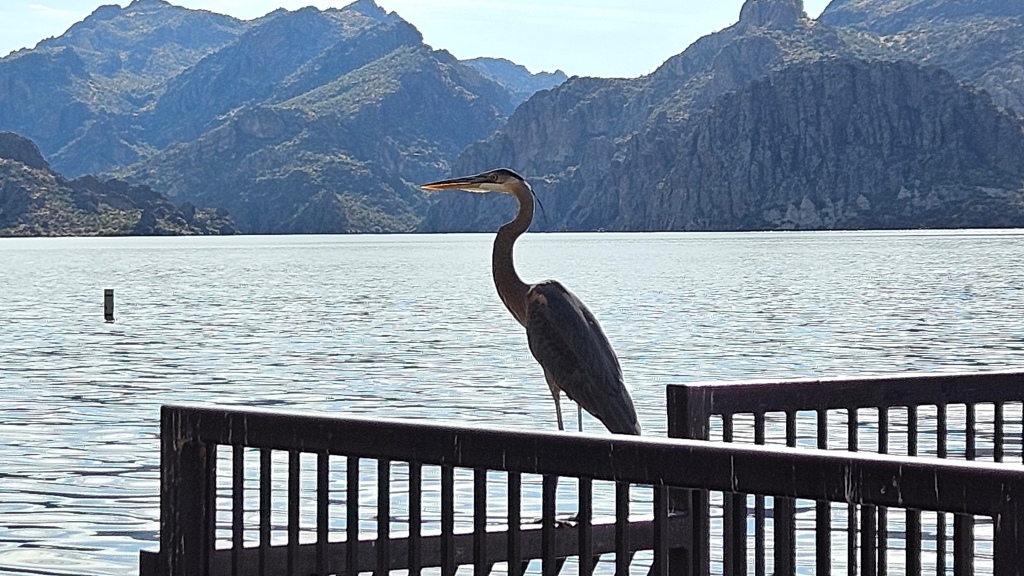
Up the road from San Diego and east of the Los Angeles sprawl lies the 50-mile-wide Coachella Valley. It’s roughly bounded by the cities of Palm Springs on the west side and Indio to the east. Palm Springs lies to the south of I-10, and Desert Hot Springs, where we stayed for a few days, is to the north. Joshua Tree was one of big stops here, where there are large swaths of the Seuss-like plants.
It was hard for me to get back into “national park mode”: getting up at 5:30 in the dark and cold morning so we could leave at 6:30. From our RV park, an hour’s drive of beautiful early-morning scenery greeted us as we drove up and around to the other side of the Little San Bernadino mountains. Our first Joshua trees were to be seen in the aptly named town of Joshua Tree.
Further down the road, we had a bit of a mix-up getting into the park. A visitors center lies right in the town of 29 Palms which, unlike every other national park I’ve been to, is a couple of miles outside the entrance gate. The center is new enough that an old park map I was following didn’t show it. I thought I knew better than GPS, so I didn’t listen to what it was telling me. We went into the gate and then backtracked into town. Once in town, Cal was distracted by a jelly doughnut place and purchased two to eat later.

One of the stops I wanted to make was also outside the gate, adding to my initial confusion. The Oasis of Mara was once a bubbling spring surrounded by grasslands. The Marra’yam people’s legend goes that the women were failing to produce baby boys, so a medicine man told them to go into the desert and stop at the first place they found water for a new place to live. This venture was so successful that the men of the tribe planted a fan palm tree for each boy born, twenty-nine in all. Not all trees have survived but to these people, the trees are their ancestors.
As you can see below, I was dwarfed by these palms. What did it look like when all of the palms were still standing?

Oh, and that bubbling spring no longer exists. Over time, it trickled down. It finally completely disappeared in the 1940’s, when new development lowered the water table.
Past the gate and further down the road, some Joshua trees came into view. The short cactus that you see on the right of this picture is called Mojave Cactus.

Joshua trees aren’t really trees at all – they are in the agave family of succulents. When the Mormon settlers saw them, the upraised arms of the trees reminded them of the Biblical Joshua, with his arms raised up in supplication to God. They are slow-growing and can live to be 150 years old, although older ones have been found.
On my park map, I thought Arch Rock might be interesting, so we made a stop. The hike to it was longer than I thought it would be, but the rocks that we encountered here were totally unexpected.

We took a little detour to Heart Rock. But if you don’t see the heart on the left of the two boulder-sized rocks, you might think they look like a couple of potatoes.
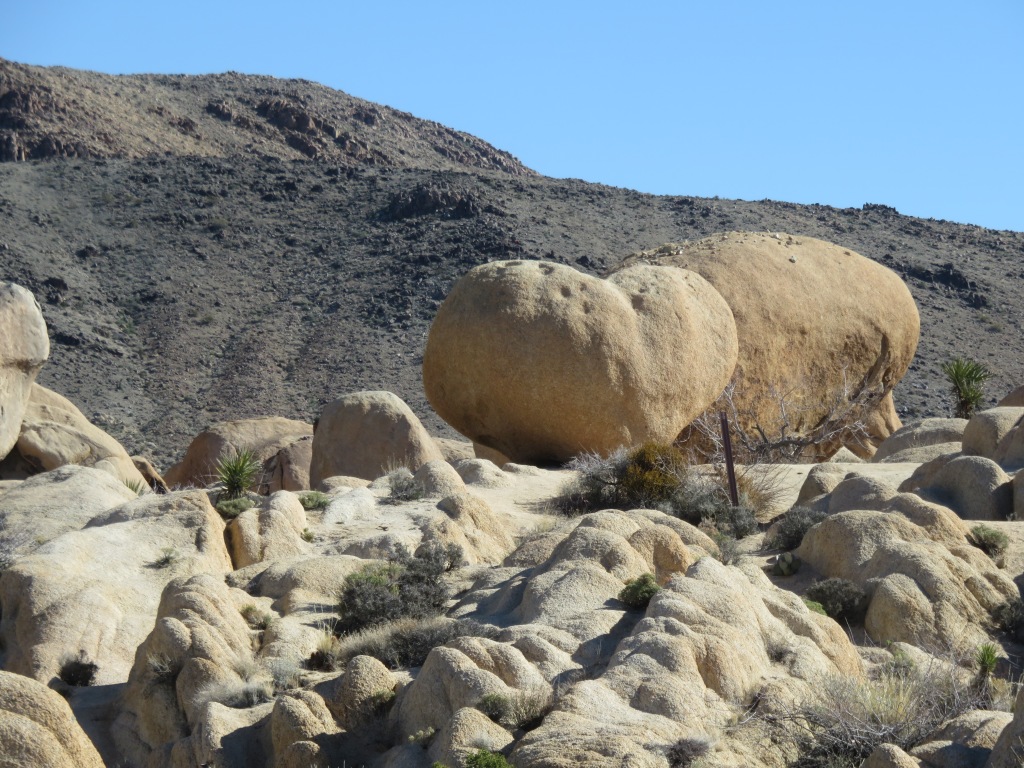
We finally found the arch. It was a little hard to photograph, with many tall rocks all around. In comparison to the others, the huge one in the foreground had an interesting texture. The surface was bumpy but it looked like it should have been smooth. Tiny gravel pieces were firmly embedded all around it.
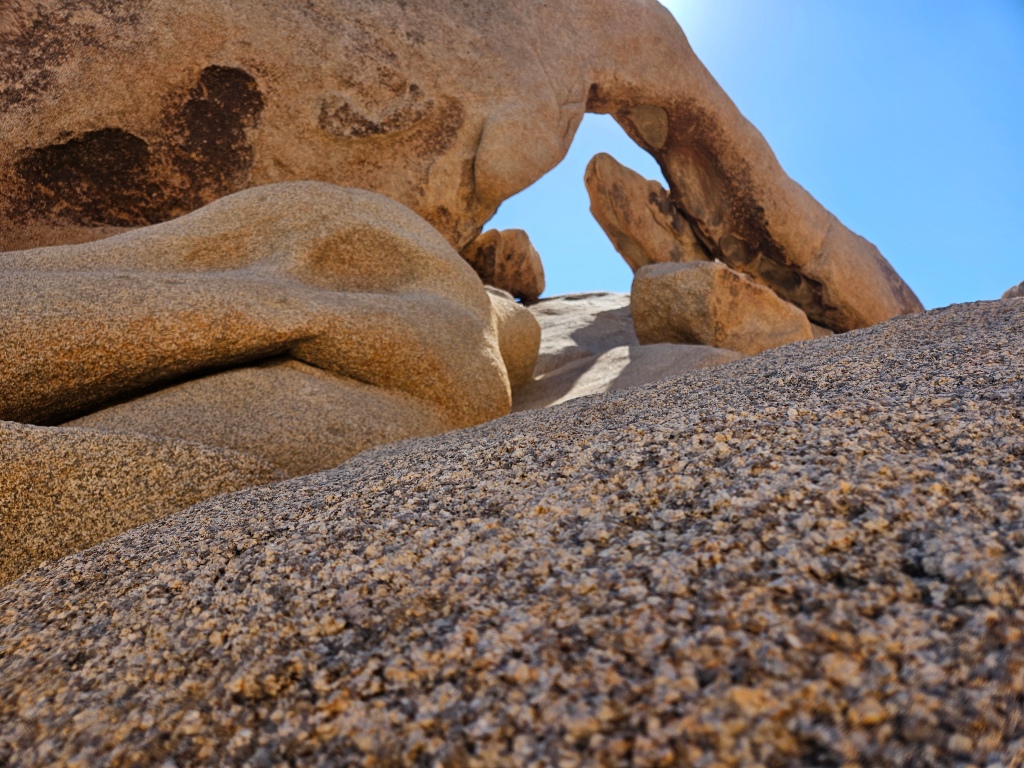
The biodiversity of Joshua Tree is what was surprising to me, and interesting to learn about. I thought our day would be full of Joshua trees, but not so. We began our exploration in the Mojave Desert, but as we drove further south on the park road, the road went up and then skirted the Hexie mountains through Wilson Canyon. This marked the transition from the Mohave Desert to the Colorado Desert. The Colorado borders the Sonora Desert, where we had been for a good part of the winter in Arizona. From here, I could look down into the Pinto Basin, which was once a huge inland sea.
In the Colorado desert, Joshua trees and Mohave cactus disappeared. We stopped to look at Cholla Cactus Garden. The cholla seemed to go on forever. While we gazed, we munched on our delicious blueberry jelly doughnuts. This was a too-long-delayed event, in Cal’s opinion.
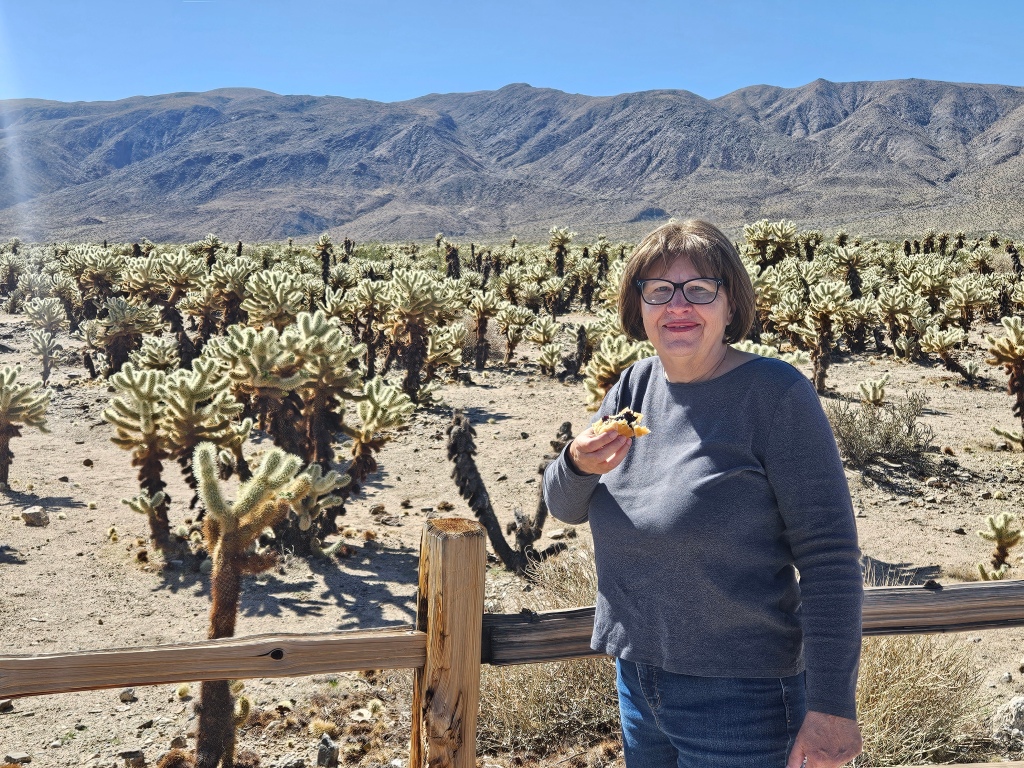
Further down the road, we came to the Ocotillo Patch. I love ocotillo for the way they metamorphose from dead-looking brown branches to green leaves, and then red flower blooms looking like a flag on top. I was hoping to see a large number in bloom. No such luck, but I did see one or two. The rest had their green leaves on, probably since the desert has received a lot of rain this past winter.

An interesting fact that I learned here, thanks to a National Park signboard, is that ocotillo are not season dependent, but rain dependent. They can grow or drop leaves as much as five times a year.
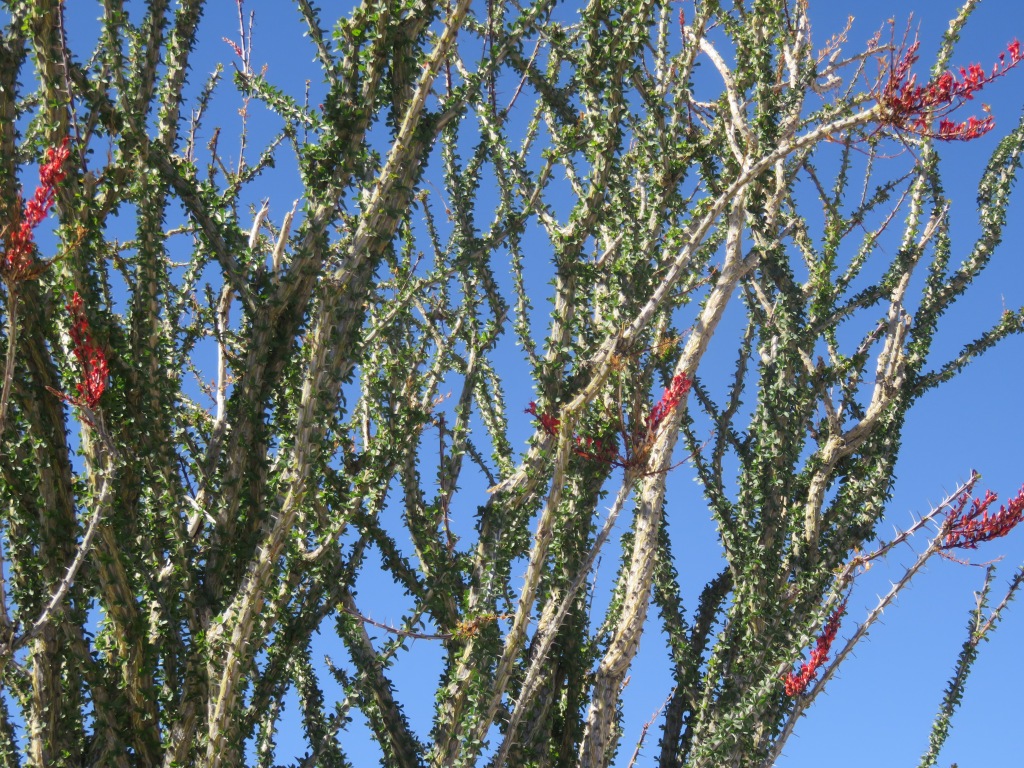
I’m always fascinated by how certain cactii varieties grow together, to the exclusion of other ones. We’ve noticed that slight changes in altitude can affect what grows where.
We turned around here and drove many miles back to Park Boulevard, where we took a left and stopped to see Skull Rock. I had read in more than one place that this would be a “don’t miss” stop. It must be everywhere on social media, judging from all the cars spilling out from a small parking lot and onto the roadway. At Ocotillo Patch, we’d had the parking lot almost to ourselves. Neither of us were much impressed by Skull Rock, but maybe that’s because we had to climb over so many people.
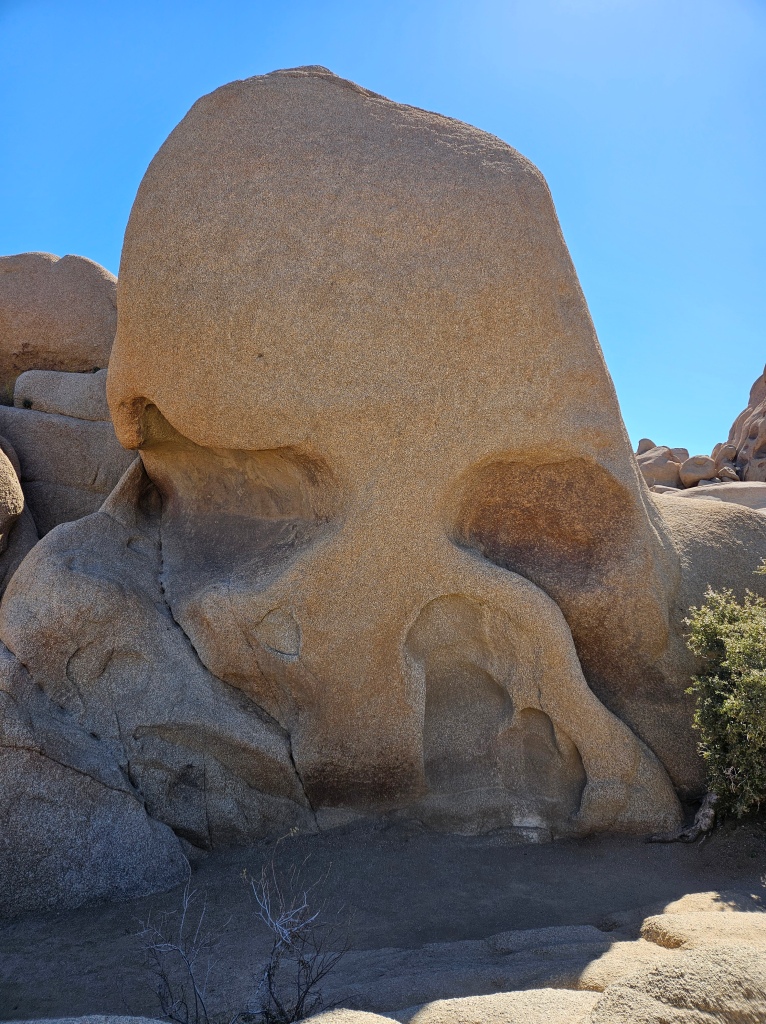
From here there were some tempting trails, though, and fun rock climbing if I were just a bit less cautious.
Further down the road, we took a twenty-minute detour upward to Keys View. This is an overlook that, at 5,185 feet above sea level, provides a gorgeous, if somewhat hazy, view of the Coachella Valley and the surrounding mountains.

It was lunchtime, but the picnic shelters we saw were full. Cal never has a problem with that. We parked at a small trailhead, pulled out our lawnchairs, and had a picnic lunch in full view of the great Mojave desert.

It was getting on to mid-afternoon, but there was one more stop to make. Hidden Valley trail is reputed to be the best hike in the park. Unfortunately everyone else knew that too, so the trail was very crowded. This is why we get up early to go to National Parks. We had seen the crowd level rise through the day, but up to Skull Rock and this stop it had been manageable.
I could see why the trail is so popular, because it is beautiful and not too long. One enters a portal of rocks, and then it opens up into a tiny valley surrounded by rock. Bandits used to hide stolen horses in here, but in later times the portals were blasted open by a rancher and it was no longer a secret.
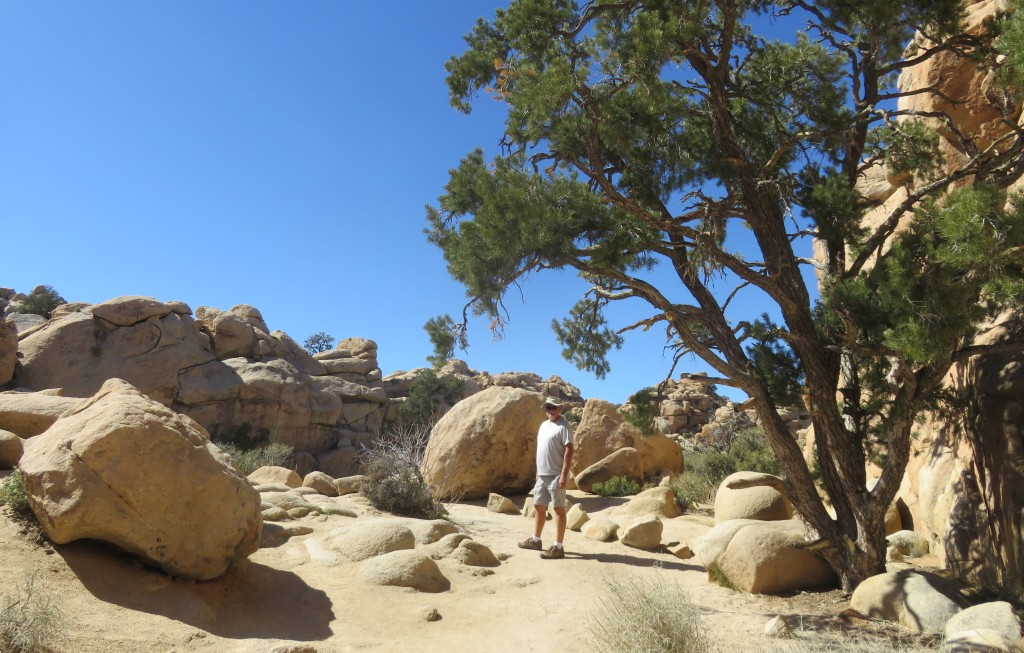
This is considered to be a “transition zone” between the Joshua tree forest and pinyon-juniper tree woodlands.

I thought the rock in the picture below looked like the south end of a gnome going north. But then again, maybe I was just getting hot and tired.

Opposite the trail area, a Joshua tree “forest” can be seen.

We were glad to have seen the park and that we didn’t die on any of the trails.

Memory is a funny thing. Years ago, we took my Mom on a trip to Los Angeles from where we were living at the time in southeastern Arizona. I’m pretty sure we traveled on I-10 going west and I remember seeing the Joshua trees out my window. I was so impressed that I have always since then wanted to come here for a visit. The southern reaches of the national park do go down to I-10. But we traveled the entirety of I-10 through the Coachella Valley, and there are no Joshua trees to be seen! Now I’ve learned that that part of the park is the Colorado Desert, not the Mojave, so of course they wouldn’t grow there. Where did I see those trees? I couldn’t have imagined them. It’s a mystery which may or may not be solved some day.
Next time – Palm Springs


